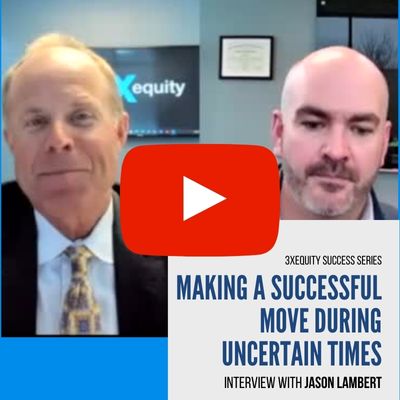As you continue to grow and manage your financial practice, it’s increasingly important to find low-cost marketing solutions to help promote your business and keep it in the forefront of your clients’ minds. An effective and inexpensive way to get your name and message out to existing and potential clients is to create a newsletter that is emailed regularly to your target audience.

While you can hire a web designer or email marketing specialist to design and distribute the newsletter, the job can be affordably done in-house by following these 8 steps:
- Define your target audience
- Brainstorm ideas
- Create an editorial calendar
- Gather or generate newsletter content
- Make newsletter content easy-to-read
- Choose a newsletter email service
- Design the newsletter to reflect your business
- Test the newsletter and review your analytics
- Define your target audience
First, who is your audience? Who do you plan to send your newsletter (or newsletters) to? Clients? Leads, warm or cold? A niche demographic? Knowing your target audience will help identify the focus of your content. If you find that there is more than one audience you want to communicate with, then you can look into setting up different email lists for each target audience. We won’t discuss email lists and groups here, but it may be an option depending on what service you use.
As Financial Planning notes, you must determine your target audience before you can decide on the tone, language, and subject matter for the newsletter, all of which are necessary before you begin Step 2, Brainstorm ideas, and Step 4, Gather or generate newsletter content.
- Brainstorm ideas
After you define your target audience, brainstorm potential topics. Schedule a time to meet as a group, or to sit down individually, and write down any ideas that may be topics of interest to your audience. What financial information and advice does your audience regularly seek? Are there any new regulatory changes for the calendar year that you can discuss, such as the changes to the social security rules for 2016? Are there any timely investment services you offer that can be used as a newsletter article? Does your audience seek financial advice seasonally? The brainstorming process should help generate a lot of information and lead to new content ideas.
- Create an editorial calendar
To help keep you on task, it can be useful to create an editorial calendar for the newsletters. An editorial calendar is simply a schedule that assigns various topics or content to specific times. To begin with, the content that you brainstormed can be allocated to each month, so you know what to include in each newsletter. Take a look at each month to see if there are gaps of information you need to add.
Next, review common holidays, such as Christmas, and rites of passage, such as college and retirement, for topic ideas to add to the calendar. Be sure to include any photo ideas and resources for links. You should finish when you have content ideas for each month, giving you 12 monthly newsletters.
- Gather or generate newsletter content
Now that you have a list of ideas to write about, decide where the content will come from. Do you want to write original content yourself? Do you work in a large environment and have several people who can write and contribute content? Do you have time to brainstorm ideas, but need to occasionally hire a freelance writer to help create the newsletter content? Other options include buying articles or using, with permission, previously published articles from yourself or colleagues, or linking to other articles after you include a brief opinion about the article.
Regardless of how you generate or gather content, the newsletter content should offer some financial advice that benefits the reader. It can educate clients about specific financial topics, offer timely financial tips and advice, inform about upcoming events, and include useful resources and links. You can even include personal information about trips and staff that may be interesting to clients. Include some photos, either professional or personal, to help tell the story and to give the newsletter some visual interest.
- Make newsletter content easy-to-read
When it comes time to decide what should go into each newsletter, keep in mind that information should be easy to read and find. Keep the newsletter content simple, not too cluttered, and include only two or three categories in each newsletter. Use catchy titles, headings, and subheadings. The reader should be able to scan the newsletter quickly for information.
Another thing to consider is that many people read email on mobile devices. When setting up the newsletter template, be sure that the newsletter is optimized for mobile devices, websites, and email clients.
Include buttons or links for readers to subscribe and share the newsletter, which should be easy to locate and even easier to use. Avoid prompts like “click here”. Instead, be specific and create links with prompts like “Subscribe now” or “Share”.
If you use social media for your financial practice then include social links near the top of the newsletter for readers to share on LinkedIn, Facebook, Twitter, etc. Be sure to post the newsletter on one or more of your social media outlets as well to maximize the opportunity for readers to find it.
- Choose a newsletter email service
A newsletter can be created using email marketing software, which offers a variety of templates to design the newsletter, track open rates, and provide analytics. Some programs are free, such as MailChimp, and others have a monthly cost to subscribe, such as Constant Contact. The features of each program vary, so take time to research what is right for your newsletter.
- Design the newsletter to reflect your business
The client newsletter is a part of your business brand. It should use the same colors, logos, taglines, and signatures as your website and any other social media that you use for your practice. Keep the newsletter design and colors consistent with each issue to help establish your brand and make it recognizable to readers as a part of your business.
- Test the newsletter and review your analytics
Once the newsletter is finished, you should test how it opens and displays on various screen sizes, such as mobile devices, tablets, laptops, and desktops. Some newsletter email services will have an option to test the newsletter’s appearance, or you can send the newsletter to a small group of friends, family, or colleagues to get feedback.
If you choose a service that offers analytics, you will want to track the percentage of how many clients open your newsletter, which links and buttons were clicked, and what content was shared.
Review the data for every newsletter to identify which topics get more opens, and to determine if there is a day or time that gets more traffic. Experiment with sending your newsletter on a weekday versus a weekend, and vary the time you send the newsletter. Tracking this information can help you find the best day and time to email future newsletters.
A newsletter, when emailed regularly, is a valuable tool that can help keep your name visible to clients, establish yourself as a financial expert, and reinforce your credibility. Decide on a regular email campaign, whether it’s monthly, bi-monthly, or quarterly, and then stick with it consistently. Consider the client newsletter as another opportunity to maintain client relationships and potentially find new clients and referrals.




